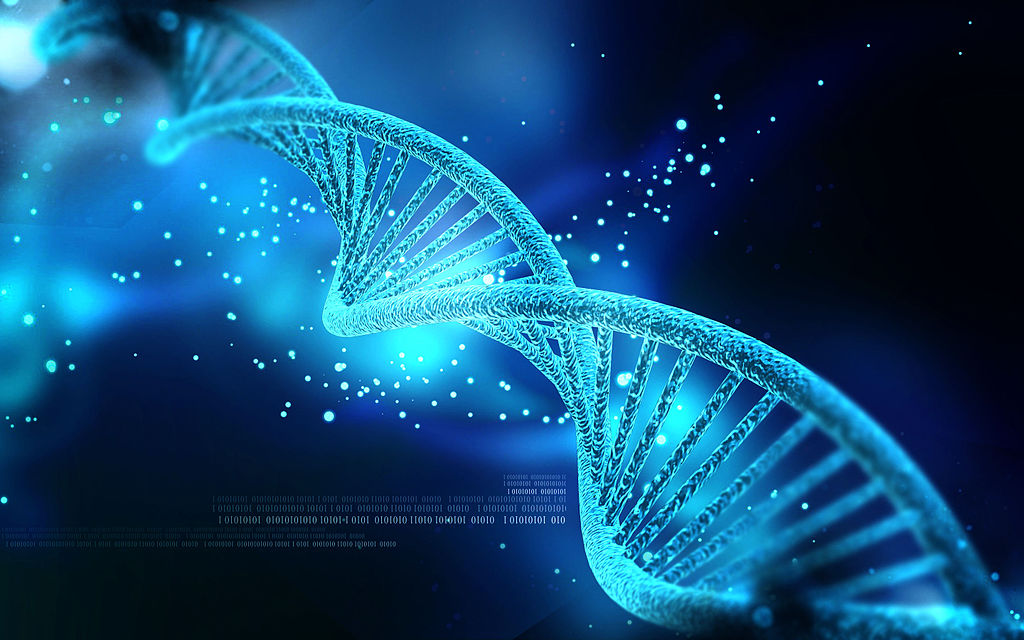We may not have flying cars and real hover boards yet, but we DO have gene editing.
Scientists for the first time have tried editing a gene inside the body in a bold attempt to permanently change a person’s DNA to try to cure a disease.
The experiment was done Monday in California on 44-year-old Brian Madeux. Through an IV, he received billions of copies of a corrective gene and a genetic tool to cut his DNA in a precise spot.
The patient, Brian Madeux, lives with an incredibly rare metabolic disease called Hunter Syndrome.
People with Hunter Syndrome “lack a gene that makes an enzyme that breaks down certain carbohydrates. These build up in cells and cause havoc throughout the body.”
Many people with metabolic diseases die very young.
Again for the AP:
Patients [like Madeux] may have frequent colds and ear infections, distorted facial features, hearing loss, heart problems, breathing trouble, skin and eye problems, bone and joint flaws, bowel issues and brain and thinking problems.
“Many are in wheelchairs … dependent on their parents until they die,” said Dr. Chester Whitley, a University of Minnesota genetics expert who plans to enroll patients in the studies.
Weekly IV doses of the missing enzyme can ease some symptoms, but cost $100,000 to $400,000 a year and don’t prevent brain damage.
Madeux’s treatment for his illness has been highlighted by 26 different surgeries.
The gene-editing tool used to (hopefully!) treat Madeux was called zinc finger nucleases, which is sort of like a pair of molecular scissors, and most notably not the same thing as CRISPR (which I have blogged about in the past).
Here’s how it works:
The therapy has three parts: The new gene and two zinc finger proteins. DNA instructions for each part are placed in a virus that’s been altered to not cause infection but to ferry them into cells. Billions of copies of these are given through a vein.
They travel to the liver, where cells use the instructions to make the zinc fingers and prepare the corrective gene. The fingers cut the DNA, allowing the new gene to slip in. The new gene then directs the cell to make the enzyme the patient lacked.
Only 1 percent of liver cells would have to be corrected to successfully treat the disease, said Madeux’s physician and study leader, Dr. Paul Harmatz at the Oakland hospital.
While I do think this is fantastic news, I think it’s important to talk about some of the risks Mr. Madeux will be assuming now that he has taken on this experimental therapy.
He really is a brave man.
Despite extensive precautions taken to create a safe environment, changes to his DNA will be permanent. The “virus” could bring about a response from his immune system, have an impact on the rest of his DNA at large or it could spread throughout his body and get into other organs besides the liver.
Having said that, Mr. Madeux is “nervous and excited,” saying, “I’ve been waiting for this my whole life, something that can potentially cure me.”
Ultimately this is really amazing stuff, and I think people living with genetic illness should watch this story unfold over the next couple of months. It’ll take some time to see if Mr. Madeux is cured (assuming the cure sticks). That cure, though, would be the first of its kind.
People with genetic illness have never had one time therapy leading to a cure. For example, in theory, this would be unlike repeated insulin use for a diabetic to manage the illness.
Unfortunately this therapy, however, will not be able to undo any of the damage already caused by his condition (we are still waiting for regenerative medications to take care of that department).
If the cure does stick it’ll undoubtedly be a huge win for gene therapy, one that’s yet to have been seen in the history of humanity.
This could be an enormous step forward in medicine.




